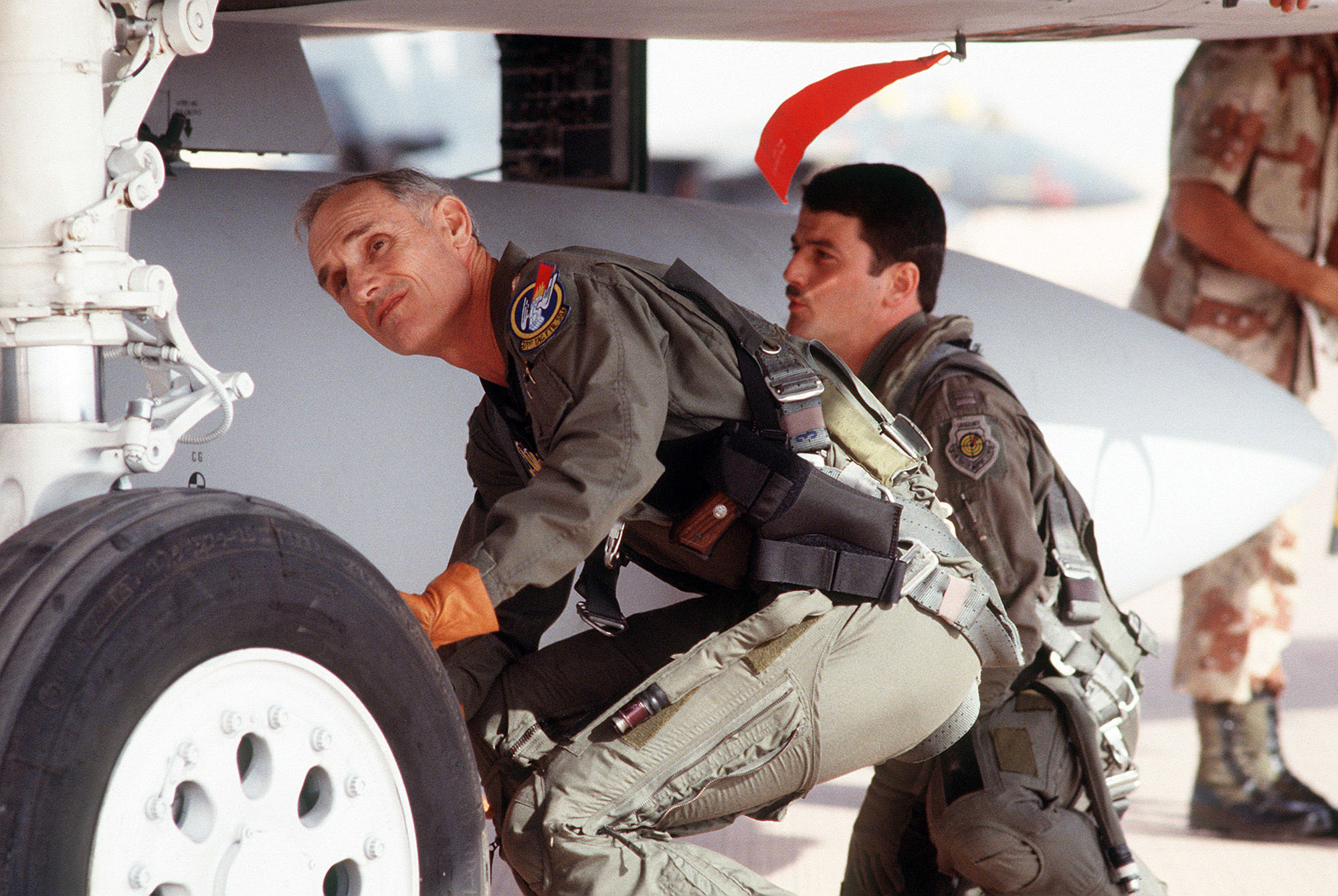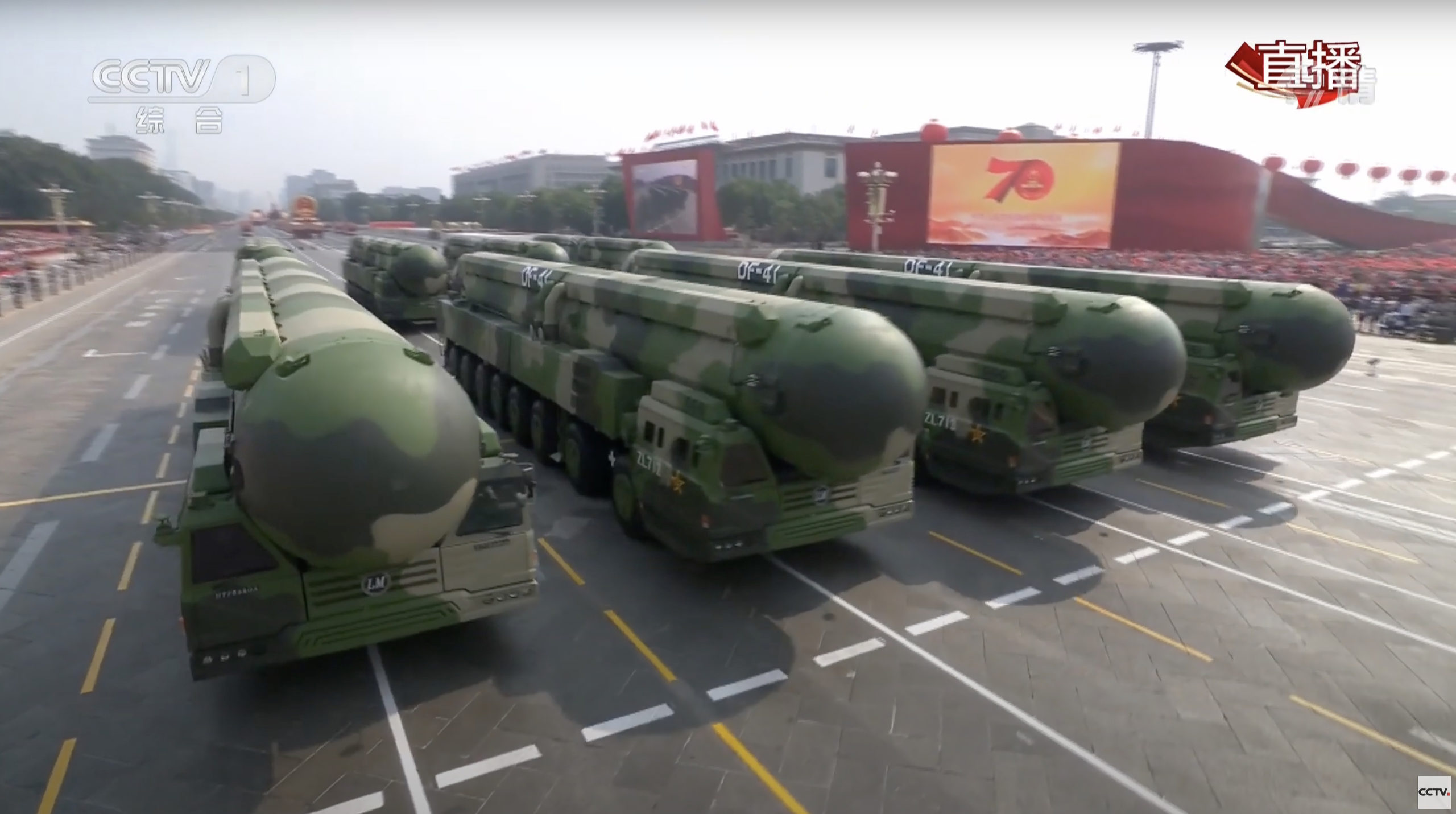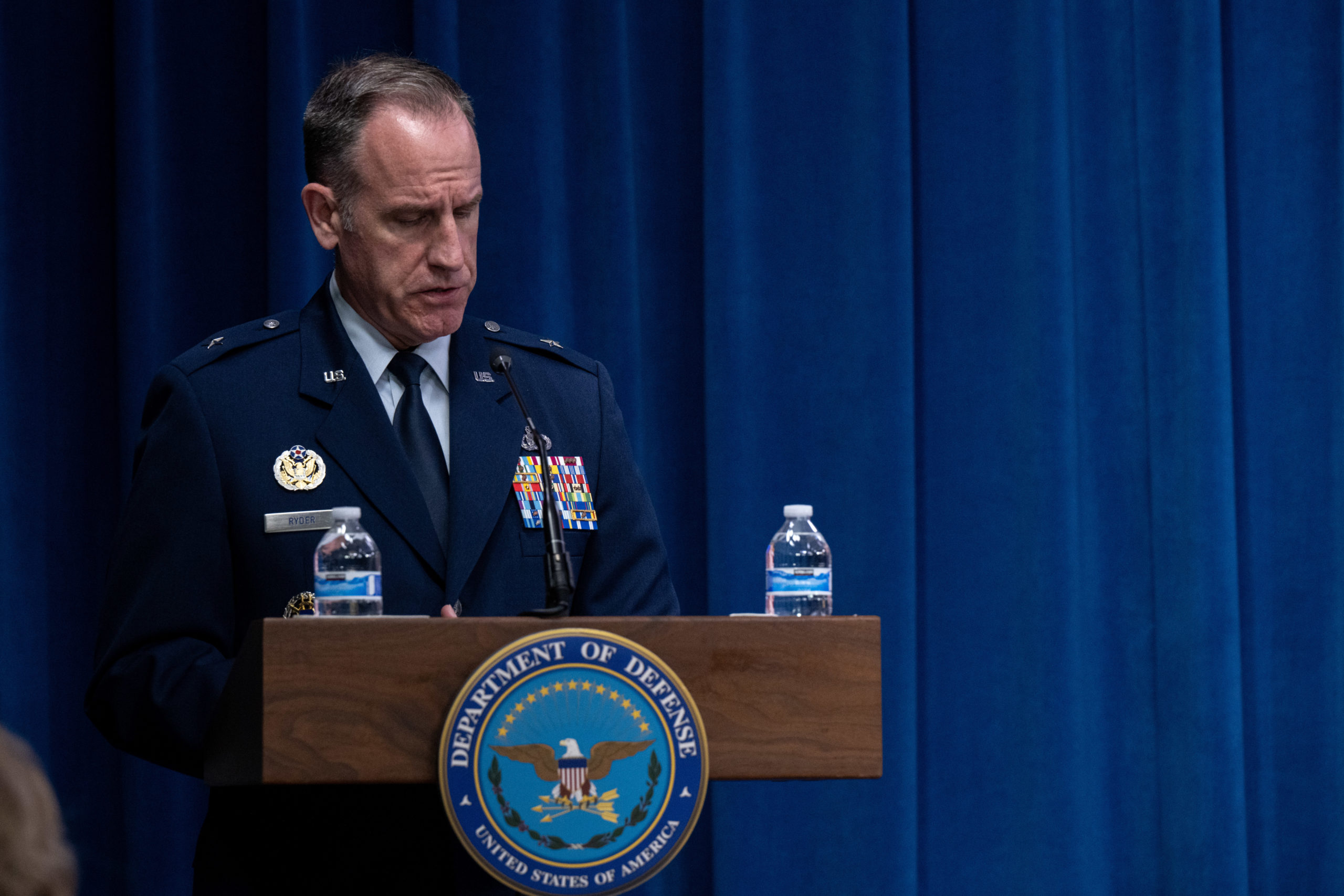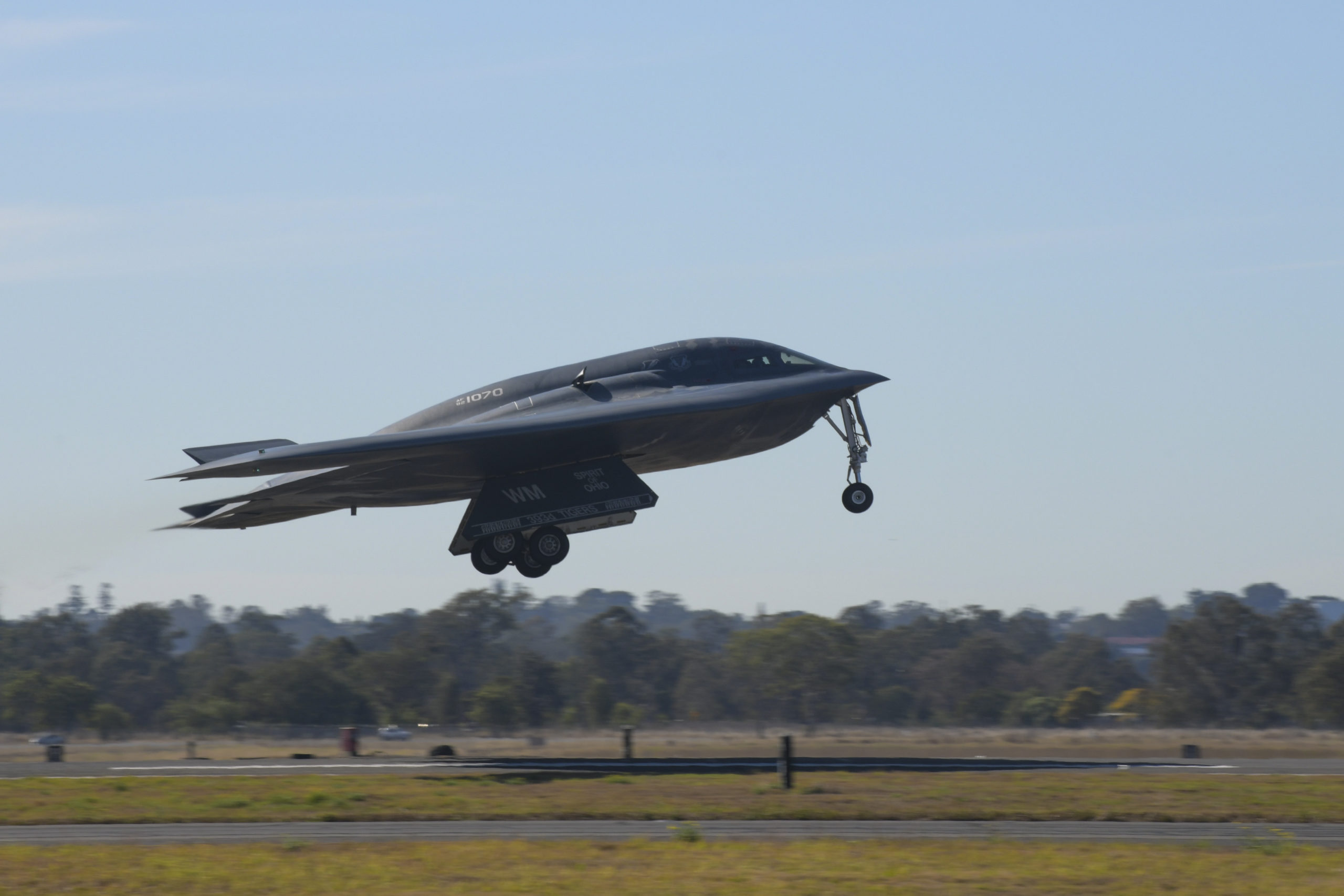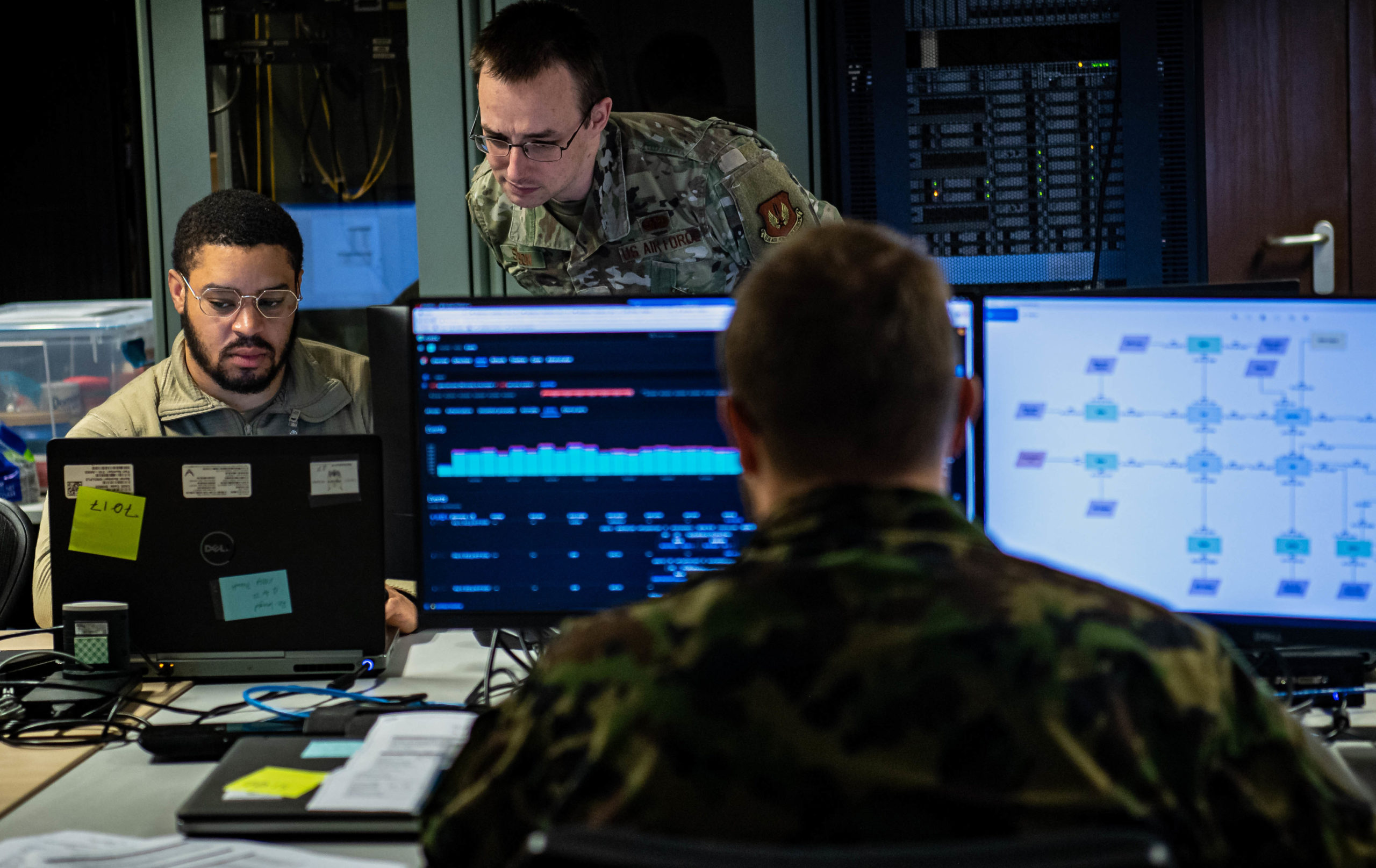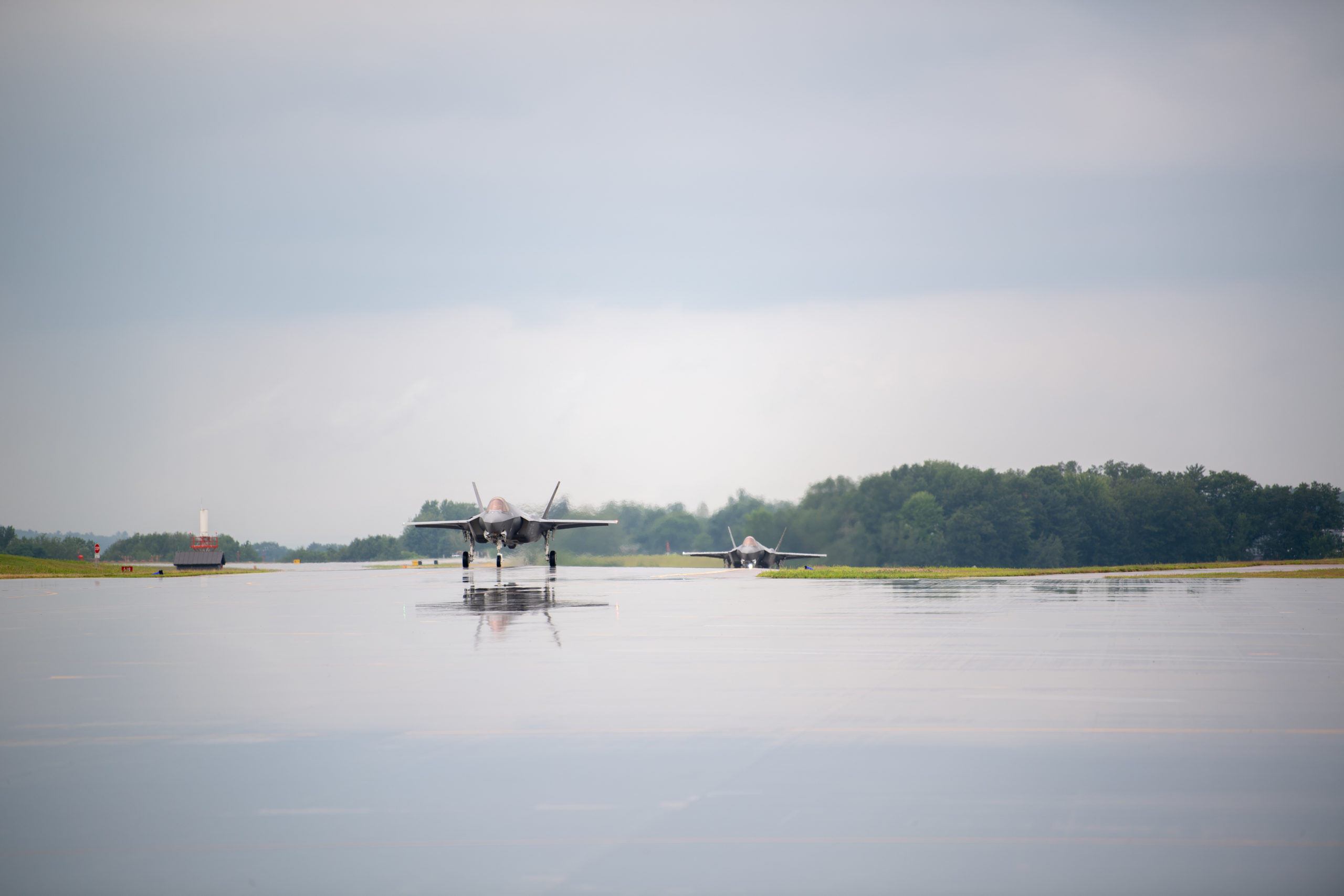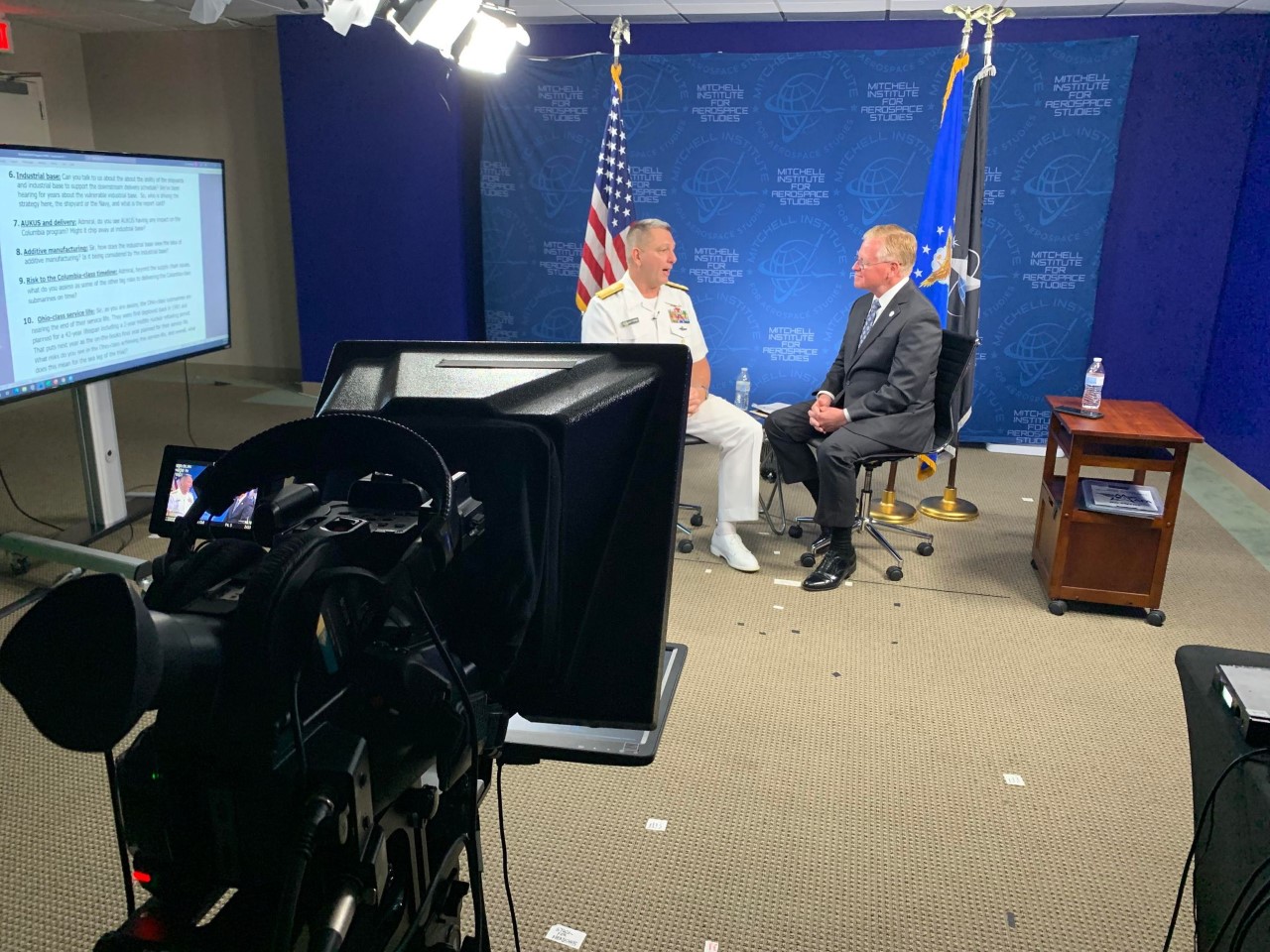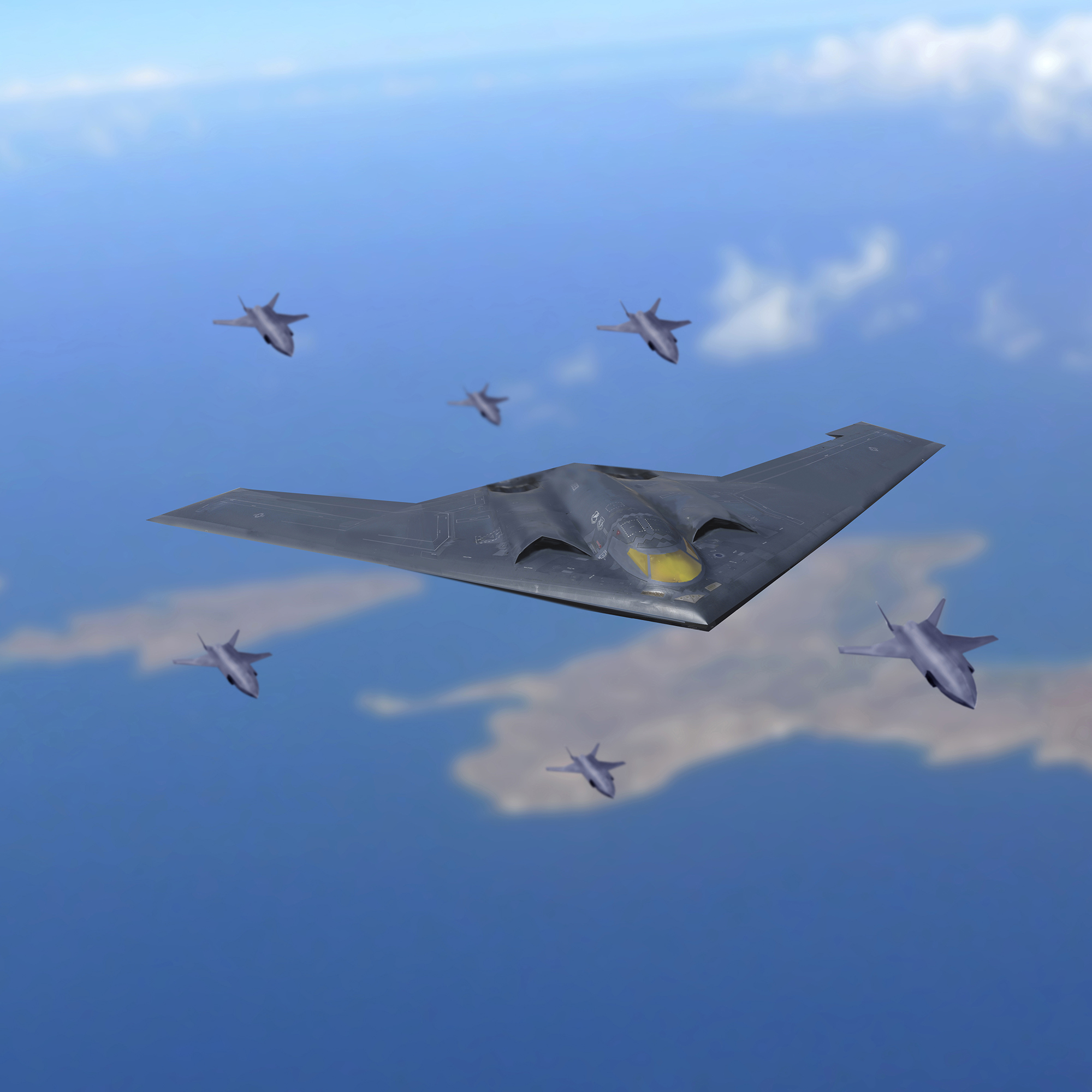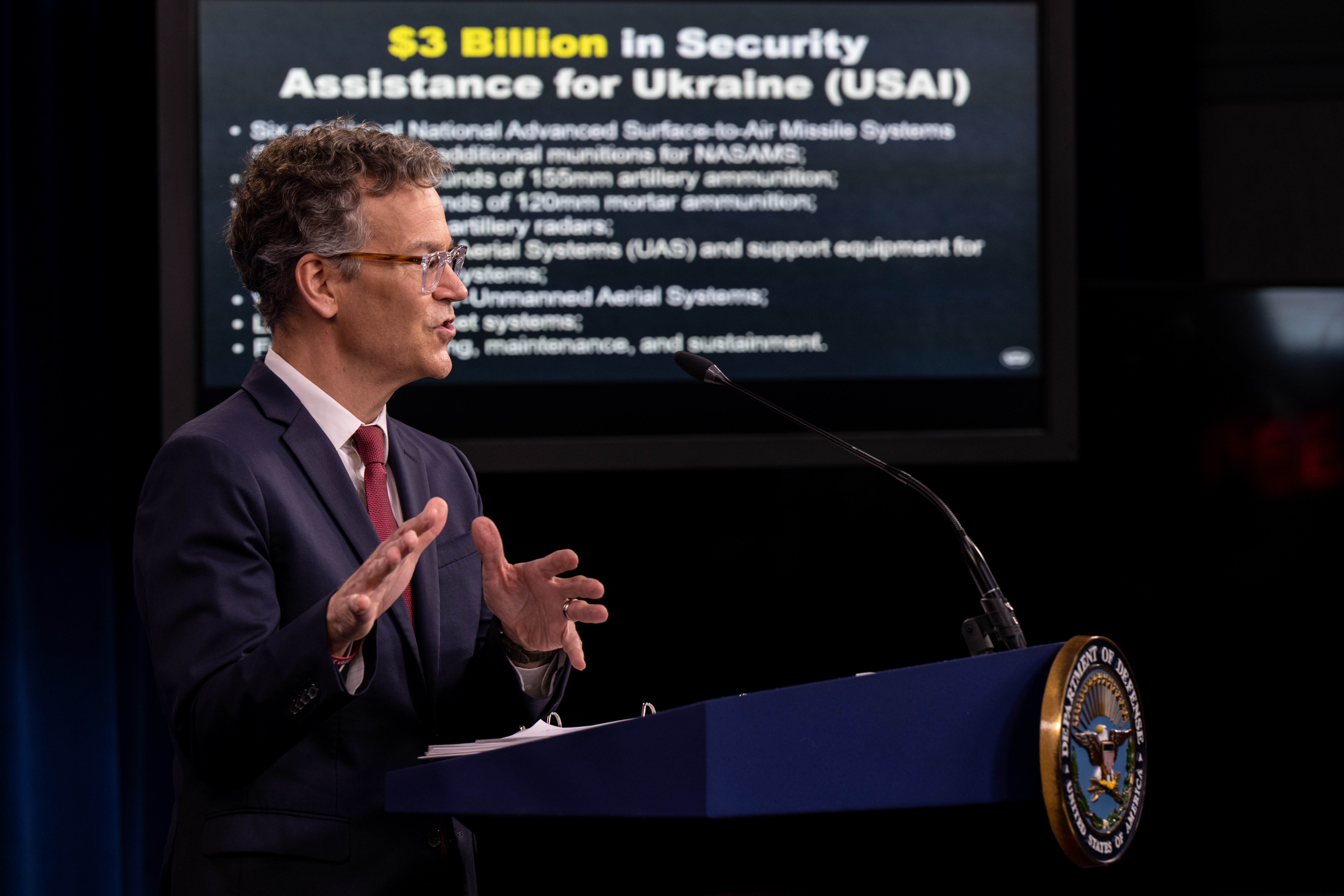In its 75-year history, 22 Airmen have led the Air Force as Chief of Staff. Each came to the post shaped by the experiences—and sometimes scar tissue—developed over three decades of service. Each inherited an Air Force formed by the decisions of those who came before, who bequeathed to posterity the results of decisions and compromises made over the course of their time in office. Each left his own unique stamp on the institution. As part of Air Force Magazine’s commemoration of the Air Force’s 75th anniversary, Sept. 18, 2022, we set out to interview all of the living former Chiefs of Staff, ultimately interviewing Chiefs from 1990 to the present. In this first in the series, we share the story of the first of those Chiefs: No. 14 Gen. Merrill A. McPeak (1990-1994). This period begins the pinnacle of American air power, the planning and execution of 1991’s Operation Desert Storm, in which the fruits of a decade of modernization were put on display to devastating effect: This was the first time the world saw how stealth could evade enemy air defenses and how the dream of precision bombing that motivated the Bomber Mafia in the interwar period leading up to World War II was actualized five decades hence.
Gen. Merrill A. McPeak, CSAF No. 14 (1990-’94)
Every Chief is unique, shaped by his time and the world as he rose through the ranks and the events and personalities defining the national security landscape when he takes office. To these circumstances each Chief adds his unique personality, style, and attributes.
When Gen. Merrill “Tony” McPeak arrived as Chief in October 1990, Iraq had, only months before, invaded and occupied Kuwait. The United States was assembling an enormous coalition against Iraq, and the Air Force would soon demonstrate a new era of American air power: Stealth aircraft that could evade enemy detection; precision weapons that could strike with pinpoint accuracy; and dominance like no air force had ever demonstrated before.
Yet McPeak’s job was not to fight that war, but to organize, train, and equip the Air Force for what would follow. By the time he became Chief, the Cold War that had defined his entire adult life was over. Born in 1936 in the midst of the Great Depression, McPeak had reached adulthood in the immediate aftermath of World War II. The Soviet Union was suddenly no longer America’s archrival. In fact, the Soviet Union no longer existed.
“Desert Storm began a couple of months after my swearing in,” McPeak recalled in July. We’re on a video call and he’s in workout gear from his home in Oregon. A photo taken in the Oval Office in December 1990 of the Joint Chiefs meeting with President George H.W. Bush and Defense Secretary Dick Cheney rests on the credenza behind him. McPeak wears a beard, and sounds very much like he did as Chief, still ramrod straight, still intense, still able to laugh at and with himself. “You would think that I spent a lot of time worrying about how to support [Gen.] Chuck Horner out in the sandbox, and I did. But I was also talking to the Secretary [of the Air Force] from Day One about how we were going to reorganize the Air Force. … [Secretary] Don Rice and I had agreed before the end of January ’91 on how we wanted to reconfigure the Air Force.”
The Air Force had 535,233 Airmen on Active duty when McPeak came to Washington. It had 426,327 when he left four years later. The drawdown was a dramatic reworking of a force that had been locked in a strategic competition for more than four decades and was anticipating President Bush’s “New World Order,” a unipolar world in which the U.S. was the sole superpower remaining. McPeak thought the entire military was ready to be reset at a much smaller scale than what the nation had been used to.
“My idea was to simplify the structure of the Air Force,” McPeak recalls. “Complexity is the enemy of success in combat. You’ve got to keep it simple. And that starts with a simple organization.” As Chairman of the Joint Chiefs, Army Gen. Colin Powell had already developed the “Base Force,” defining the scale of the coming drawdown. The aim was to avoid creating a hollow force that would retain structure devoid of capacity, but instead outline a force that could fight two wars on the scale of Operation Desert Storm simultaneously.
McPeak did away with Strategic Air Command, Tactical Air Command, and Military Airlift Command. Instead of three of these Major Commands, the Air Force would have two: Air Combat Command and Air Mobility Command. The change in acronyms was intended to help drive home the changes, which were driven by the notion that the distinction between tactical and strategic forces was anachronistic.
“I think how we organize to fight is the most important thing a leader can do,” McPeak says. “Then of course you’ve got to turn them loose to fight. And if they’re well trained, they’ll do well. But first, it’s how you organize to go to battle. That had been very important in my thinking for a long time, certainly before I became Chief. … And remember: the way you organize something is, first, you organize it, and then, second, you’re reorganizing.”

First moves aren’t always right, and McPeak is quick to own his mistakes (at least where he sees decisions as wrong). “I put the ICBM force into Combat Command—that was a mistake,” he says. He changed his mind, altering people’s lives in the process, and moved it to Space Command. Later, it would be moved again, combined with bombers into Air Force Global Strike Command. McPeak was passionate about getting organization right, and achieving a viable structure that made logical sense. “When, I took over the Air Force it had 200 things called ‘wings,’” he says. “When I left, we had 100 things called wings. They were real wings.”
Organizational upheaval created turmoil. “Any organization that wants to stay at a high level of performance is in virtual reorganization all the time,” McPeak says. For example, there were two wings at Andrews Air Force Base, Md., south of Washington, D.C., and when asked why, McPeak was told it was too much for one colonel to manage. “I said, ’Well, let’s make it a one-star and put the whole wing under him and get rid of a headquarters and a staff car and a secretary.’ Man, if one person can’t run Andrews then what am I doing trying to run the whole Air Force?”
McPeak’s structural remaking of the force was, he recalls, about one-third drawdown and Base Force, “but two-thirds of it was closing superfluous wings.”
Cutting the force was an opportunity, if it meant the service could be more efficient. But getting the message across was difficult. McPeak saw the Base Force not as an objective floor below which the Air Force and other services would not go, but as a ceiling: the biggest it could possibly be when the cutting was finally done. That proved prescient. Service budgets that peaked before the end of President Reagan’s eight years in office continued to decline through most of the 1990s. At the same time, demand for Air Force operations remained constant. While the services returned to a massive homecoming celebration in Washington, D.C., in 1991, the Air Force found itself adapting to a new way of life, rotating forces and aircraft through the Middle East to enforce no-fly zones in the south and north of Iraq, protecting Iraqis from their own military.
None of that was clear when McPeak was still in charge. He was remaking the Air Force in his own image, and he was a different kind of Airman. He remains today a different sort of former Chief, still marching to the beat of his own drummer, still intimately familiar with the Air Force but from a greater level of remove than other former Chiefs. He is a Chief who sweated details others would ignore. He had the Air Force Band create a string quartet to play chamber music because he felt the Strolling Strings were outsized for his quarters at the Air House. He took part personally in the auditions.
He introduced a new uniform. If there’s anything most Chiefs won’t do, it’s work on uniforms. Everyone has an opinion, and everyone is an expert. The uniform McPeak introduced was derided both for being cut for McPeak’s wiry physique and for looking too much like a commercial airline pilot’s uniform. Yet while the decorations on that uniform would change, the basic suit remains the same.
“No guts, no glory,” he says of Chiefs who shy away from uniform controversy. “If you don’t want to take on big challenges, then you shouldn’t be in the Chief’s office. [The uniform] didn’t take up much of my time. It was easy. And by the way, that uniform is being worn today. That’s my uniform, except it’s been glitzed up. … My idea that simplicity is what works in combat? Well, it also works in uniforms. The blue suit with three Arnold patch buttons on the front is …. the uniform I helped to redesign.”
Others knocked McPeak as symbolizing the “fighter mafia” and favoring combat aviators. A former Thunderbird, McPeak had flown more than 200 sorties in Vietnam and 199 as a Thunderbird, surviving the team’s first-ever crash in front of a public audience when the wings of his F-100 sheared off on a maneuver in Del Rio, Texas, in October 1967. Pulling his jet heavenward at 6.5 Gs, he heard a loud bang as the wings came off, releasing fuel that turned into a fireball. That he survived the accident is a testament as much to skill as luck.
McPeak questions the fairness of the fighter mafia label. “I made Billy Boles a four star and sent him to run Training and Education Command. Not only was he not a fighter pilot, he wasn’t any kind of pilot. He wasn’t a navigator. He had a slick uniform right here where here you put your wings. First guy ever sent to Air Education and Training Command who was nonrated. I sent up to the Air Force Academy Paul Stein. First Air Force Academy Superintendent who was not a rated officer, not a pilot. I brought in a guy to be Vice Chief who was a space guy, he wasn’t a pilot. But he was a warrior. Billy Boles was a warrior. Paul Stein—go find me a warrior better than Paul Stein. I wasn’t so much interested in who’s a fighter pilot as I was in who’s a warrior. Turns out a lot of fighter pilots are in that category. Thank goodness!”
McPeak was no dictator when it came to selling his vision of the force. “I spent about one-third of my time in front of audiences, working on consensus,” he recalls. “No organization that I know of goes anywhere based on what Mussolini tells them to do. We all operate on consensus. And that’s true in the military. I never thought I could just come in and turn on the light switch and expect everybody to have all the lamps in the building go on. So I worked hard to build consensus, [but] I was only about 51 percent successful. Change is hard to do. It’s hard to lead.”
The reason it was so hard, he says, is that he wanted to do more than incremental change. “Look, you know how to create the best dictionary in the world?” he asks, pausing for effect. “Start with the existing best dictionary and then fix one mistake, one word. That’s what some people have as an idea of leadership. But that wasn’t my idea. I wanted to start building a new dictionary. That’s pretty ambitious.”
That would not work if every Chief wanted to do that, he acknowledges. “We can’t have an Air Force that every four years gets turned on its head and shaken hard. But every once in a while, it’s not a bad idea.”
McPeak blew up thousands of pages of regulations, calling in his functional Chiefs and asking them to boil down those regulations to four or five pages, double-spaced. He recalls it took multiple iterations to boil these down to their essence. “The idea was we should have instructions that say what is important to us. And if 100 things are important, it’s like saying nothing’s important.”
By going to the functional Chiefs—“the head cop, the head chaplain, the surgeon general”—McPeak sought to build consensus around a singular idea: “What is it that we’re in business to do here? What is the Air Force all about? With the central idea being that it’s about excellence,” he says. That vision is too often lost, he said, in other pursuits. “I hear way too much today about diversity. It is not the mission of the Air Force to solve society’s diversity problems. I’m not against diversity, but I am for winning in aerial combat. That comes first.”
When McPeak took office he had a four-by-six card in his desk on which he had written five simple, declarative sentences, five things he wanted to accomplish in that office. “Every day I was inundated by other things that other people wanted me to do,” he said. “People would come in and say, “Hey, boss, I’ve got a horrible problem. You’ve got to help me. I’d listen to them and say, go fix it. Come back and tell me how you fixed it. Then I’d open that top drawer and look at the little card to tell me about the things I wanted to do. …. Never got them done, by the way. Never accomplished those five things.”
What were they? McPeak won’t say. “Because I failed,” he says. “I’m not in the confession mode here, and you’re not my priest. I’m not willing to admit the depth and breadth of my failure.” But was it failure to be ambitious, to strive for things that remained out of reach? For an 85-year-old former Chief, the frustration is not that, but the reality of the constraints of time, which, like the constraints of gravity, limit most people to live life inside the lines. McPeak spent his life trying to break free of those constraints.
“You only have four years,” he continues. “To do the things that I had in mind would have required eight or maybe 10 years. Therefore I was too ambitious. You have to decide what mistakes you want to make in life. You don’t ever get it right. So the mistake I want to make is to be too much of X and too little of Y. … My five things were things I couldn’t get done in four years. And, so part of my problem as Chief was I tried to get them done in four years.”
- Chiefs, Part 1: Discordant Visionary
- Chiefs, Part 2: A Quest for Stability, A Last Stand on Integrity
- Chiefs, Part 3: Like Father, Like Son
- Chiefs, Part 4: ‘I Tried to Always Make Things Better’
- Chiefs, Part 5: ‘Buzz Was Right’
- Chiefs, Part 6: ‘The Accidental Chief’
- Chiefs, Part 7: ‘Surviving the Budget Control Act Debacle’
- Chiefs, Part 8: The ‘Joint’ Chief
- Chiefs, Part 9: ‘Last of the Cold War Chiefs’
- Chiefs, Part 10: ‘The Invisible Chief’
